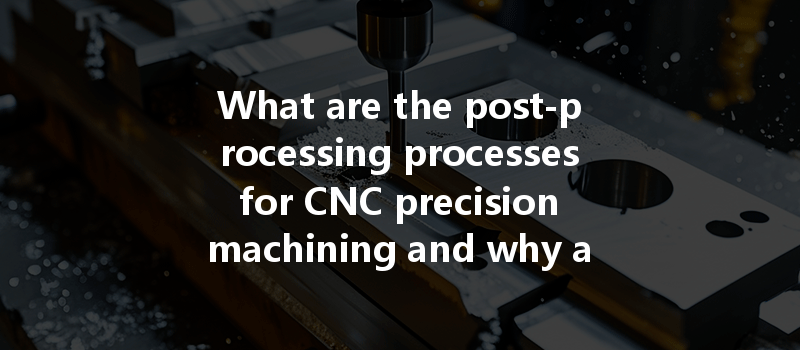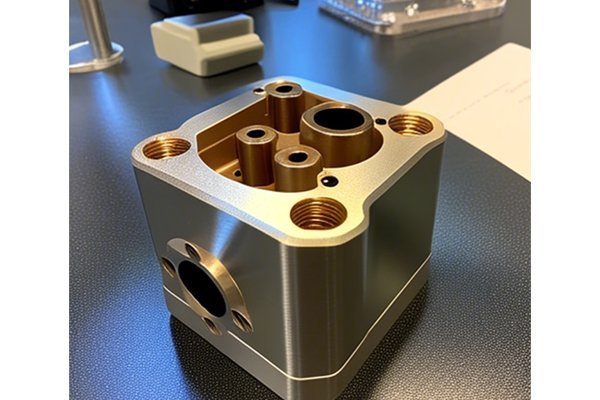—
: The Hidden Impact of Post-Processing in CNC Machining
Have you ever considered that approximately 70% of the total cost of a machined part can come from secondary operations and post-processing? It’s a staggering statistic, yet many engineers and manufacturers may overlook this critical phase of the CNC machining process. This blog will delve into the world of post-processing in CNC precision machining, revealing not only its significance but also the various techniques and best practices that can lead to higher-quality outputs.
What is CNC Machining?
Before we dive into post-processing, let’s clarify what CNC (Computer Numerical Control) machining is. CNC machining utilizes computer-controlled tools to produce precision components from various materials, including metals, plastics, and composites. This process ensures high accuracy, repeatability, and consistency, making it integral to various industries such as aerospace, automotive, and medical devices.
The Importance of Post-Processing
Post-processing refers to the series of steps taken after the initial CNC machining has been completed. These steps are crucial for achieving specific characteristics in the finished product, including improved surface finish, enhanced mechanical properties, and more precise dimensions.
Why Consider Post-Processing?
Common Post-Processing Techniques
Let’s dive deeper into the various post-processing techniques that can enhance the functionality and appearance of CNC machined components.
Deburring is the process of removing sharp edges or burrs—unwanted remnants left over after cutting or machining. Burrs can affect the overall functionality of the part, leading to safety hazards or compromised performance.
Polishing is intended to improve the visual and tactile qualities of a part. Whether it’s achieving a mirror-like finish or preparing a surface for coating applications, polishing is an essential component of post-processing.
Coating can refer to several methods used to apply a protective or decorative layer to a machined part.
Heat treatment involves controlled heating and cooling processes to alter the physical and sometimes chemical properties of a material. It’s crucial for improving hardness, strength, and toughness.
Surface treatment encompasses a range of procedures to improve the surface properties of components.
Advanced Post-Processing Techniques

As technology evolves, so do post-processing methods. Here are some advanced techniques that are making waves in CNC machining.
This technique involves combining traditional CNC machining with additive manufacturing (3D printing). This allows for the creation of complex geometries that may be difficult to machine.
Laser technology has emerged as an efficient solution for high-precision cutting and engraving.
Used primarily for precision cleaning of machined parts, ultrasonic cleaning employs high-frequency sound waves to remove contaminants.
Quality Assurance in Post-Processing
Quality assurance is vital throughout the machining process, particularly in post-processing. Effective quality management practices ensure that all components meet predetermined specifications.
Best Practices for Efficient Post-Processing
To achieve optimal results in your post-processing efforts, consider the following best practices:
Case Studies
To illustrate the importance of effective post-processing, let’s explore a few case studies from various industries:
Case Study 1: Aerospace Component Manufacturer
A leading aerospace component manufacturer faced challenges with the dimensional accuracy and surface finish of their machined components. Implementing a comprehensive post-processing protocol that included advanced CNC polishing and meticulous inspection using laser scanning gave them a competitive edge, resulting in higher-quality parts and reduced rework costs.
Case Study 2: Medical Device Manufacturer
A medical device manufacturer sought to comply with stringent regulatory standards. By introducing thorough post-processing techniques—particularly heat treatment and biocompatible coatings—they not only met the required specifications but also improved part performance and longevity, enriching customer satisfaction.
: The Path Forward in CNC Machining
In summary, post-processing is not merely a supplementary phase in CNC machining; it is an essential step that influences a component’s functionality, quality, and overall success. By incorporating techniques such as deburring, polishing, coating, and heat treatment while embracing advanced technologies and adhering to best practices, manufacturers can significantly enhance their outputs.
As the CNC machining industry continues to evolve, the importance of effective post-processing should not be underestimated. It is a pivotal element that can mean the difference between an average product and one that stands out in terms of performance and reliability.
Understanding and implementing robust post-processing techniques will not only improve the quality of machined parts but will also contribute to a manufacturer’s reputation in the marketplace. For anyone involved in CNC machining, staying informed and proactive about post-processing practices is crucial for success—so take the time to adapt and refine your processes for tomorrow’s challenges.
—
Why This Blog is Important:
This blog serves as a valuable resource for manufacturers, engineers, and industry professionals who seek to improve the quality and efficiency of their CNC machining operations. By shedding light on the significance and techniques of post-processing, we hope to inspire readers to consider how these practices can elevate their work and lead to greater success in a competitive landscape.
Related Posts
- How Do Material Properties Impact the Lifespan of CNC Machining Tools and Their Performance?
- How to Control Thermal Deformation of Stainless Steel During CNC Machining: Essential Tips and Techniques?
- What is the strength difference between 6061 aluminum and 7075 aluminum in CNC machining applications?






